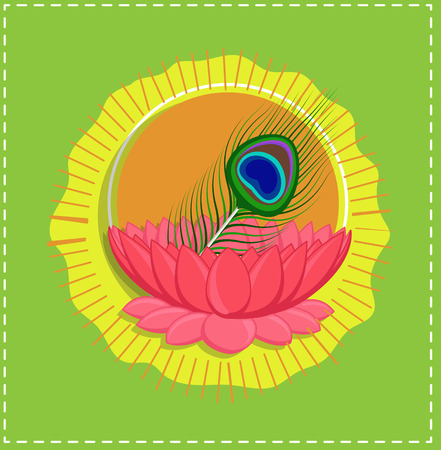Introduction to the Significance of Flower Decoration in Indian Puja
In India, flowers are not just beautiful creations of nature; they hold a deep spiritual and cultural significance, especially during Hindu festivals. Whether it is Diwali, Navratri, Ganesh Chaturthi, or Durga Puja, every festival is incomplete without the vibrant presence of fresh flowers adorning the puja place. Flower decoration, or phoolon ki sajawat, is considered auspicious and is believed to attract positive energies into the home. According to Hindu beliefs, flowers are a pure offering to deities and represent devotion (bhakti), purity, and love. Using locally available flowers like marigold (genda), jasmine (chameli), lotus (kamal), and rose (gulab) not only enhances the beauty of the mandir but also connects devotees with India’s rich heritage. The tradition of decorating the puja area with flowers has been passed down through generations and is an essential aspect of all major festivals. It sets a serene and divine atmosphere, making prayers more meaningful and celebrations truly vibrant.
Choosing the Right Flowers According to Festivals and Deities
In India, selecting the appropriate flowers for puja place decoration is deeply rooted in tradition, especially during Hindu festivals. Every festival is associated with specific deities and regional customs, which influence the choice of flowers. Using the right blooms not only enhances the beauty of your pooja ghar but also reflects respect and devotion towards the gods and goddesses. Let us explore which flowers are preferred for some major Hindu festivals.
Popular Flower Choices for Major Festivals
| Festival | Main Deity | Preferred Flowers | Regional Customs & Notes |
|---|---|---|---|
| Diwali | Lakshmi & Ganesha | Lotus, Marigold, Roses, Jasmine | Marigold garlands are a must in North India; Lotus is considered auspicious for Lakshmi Puja. |
| Navratri/Durga Puja | Durga, Saraswati, Lakshmi | Hibiscus (for Durga), Lotus, White Flowers (for Saraswati) | Bengal prefers red hibiscus for Maa Durga; South India uses white flowers like jasmine for Saraswati Puja. |
| Ganesh Chaturthi | Ganesha | Red Hibiscus, Durva Grass, Marigold | Red hibiscus is believed to be Lord Ganesha’s favourite; Durva grass is offered across regions. |
| Pongal/Makar Sankranti | Sun God (Surya) | Kumkum Puvvu (Saffron flower), Marigold, Lotus | Tamil Nadu homes often use locally available bright yellow and orange flowers symbolising prosperity. |
The Significance Behind Flower Selection
The selection of flowers is not random; each variety has a symbolic meaning or an association with a deity. For instance, lotus signifies purity and is dear to Goddess Lakshmi, while red hibiscus represents strength and is offered to Goddess Durga and Lord Ganesha. During Navratri, different days may call for different coloured flowers according to the avatar of the goddess worshipped that day.
Tips for Choosing Flowers as per Region and Rituals
Always consider local availability and traditions. In South India, fresh jasmine strings are used liberally in puja decor, while in Maharashtra, marigold torans are popular. Before decorating your puja place, check if there are any taboos regarding specific flowers for certain deities in your community. By aligning your flower choices with festival significance and regional practices, you can create a spiritually charged and visually appealing puja space that brings blessings to your home.

3. Traditional and Modern Flower Decoration Styles for Puja Spaces
India’s vibrant festivals call for unique flower decoration ideas that blend tradition with modern creativity, especially when it comes to puja places at home or in temples. Let’s explore some classic Indian floral arrangements as well as contemporary trends that you can try for your next festive celebration.
Classic Indian Floral Arrangements
Garlands (Malas)
Garlands made of marigold, jasmine, rose, or mogra are a staple in Hindu puja decorations. Traditionally, these malas are draped around deities, hung over doors, or used to adorn the mandapam. Marigold is especially popular during Diwali and Ganesh Chaturthi due to its auspicious significance and vibrant colour.
Torans
Torans are decorative hangings placed on entrances to welcome positive energy. In Indian homes, torans made from fresh flowers like mango leaves and marigolds are commonly used during Navratri, Holi, and other festivals. They add a festive touch while symbolising prosperity and good luck.
Floral Rangolis
The art of making rangoli with flower petals is an age-old tradition across India. Using petals of rose, chrysanthemum, and marigold, devotees create intricate patterns on the floor near the puja space or entrance. During Onam in Kerala or Diwali in North India, floral rangolis are particularly prominent, spreading divine vibes throughout the home.
Contemporary Decorative Ideas
Floral Backdrops and Curtains
For a modern twist, many families now use flower curtains or backdrops behind their puja altar. These can be designed using strings of orchids, roses, or even artificial flowers mixed with fairy lights for a glowing effect during evening aartis.
Bowl Arrangements & Floating Flowers
A popular contemporary style is arranging fresh flowers in large brass or copper bowls filled with water. Floating candles and petals add elegance to the puja area and are especially loved during festivals like Kartik Purnima and Diwali.
Minimalist Floral Accents
If you prefer a subtle look, place single blooms in small vases around the puja table or use petite floral bunches tied with sacred threads (kalava) as accents. This approach suits urban homes where space is limited but style matters!
Blending Traditions with Innovation
The beauty of decorating your puja place lies in mixing traditional elements with new-age ideas—honouring heritage while embracing creativity. Whether you choose classic garlands or trendy bowl arrangements, let your flower decorations reflect devotion and festive spirit unique to every Hindu festival in India.
4. DIY Flower Decoration Ideas Using Local Materials
Transforming your Puja place with flowers doesn’t have to be expensive or complicated! In most Indian homes, local markets are a treasure trove of fresh blooms and decorative items that can make your festival puja space vibrant and inviting. Here are some easy, cost-effective DIY flower decoration ideas you can try using materials that are easily available in your neighbourhood.
Choose Local Flowers for Best Results
Opt for flowers that are commonly found in your region, as they are both affordable and fresh. Popular choices include marigold (genda), jasmine (mogra), roses, tuberose (rajnigandha), chrysanthemum, and lotus. These flowers hold cultural significance during different Hindu festivals and offer beautiful colours and fragrance.
Simple DIY Flower Décor Ideas
| Decoration Type | Materials Needed | How to Create |
|---|---|---|
| Traditional Toran | Marigold strings, mango leaves, thread | Tie marigold and mango leaves alternately on a strong thread. Hang above the entrance or Puja room door for auspicious vibes. |
| Pooja Thali Decoration | Rose petals, jasmine flowers, diyas, small brass plates | Arrange petals in concentric circles on the thali. Place diyas in between for an attractive look. |
| Floating Flower Bowls | Large brass/steel bowl, water, rose/mogra petals, floating candles | Fill the bowl with water, add petals and float candles for a peaceful ambience near the Puja area. |
| Flower Rangoli | Marigold petals, coloured rice/flour, leaves | Create simple rangoli patterns using petals and leaves at the entrance or around the deity’s base. |
| Pillar or Mandap Decoration | Bunches of locally sourced flowers, coconut leaves, banana stems (if available) | Tie bunches together and wrap around pillars or mandap structure to give a festive touch. |
Pro Tips from the Community:
- Sourcing: Buy flowers early morning from local mandis for best quality and prices.
- Sustainability: Use reusable threads, bowls, or plates to minimize waste after the festival.
- Cultural Touch: Incorporate regional elements like banana leaves in South India or betel leaves in Bengal for authenticity.
- Keeps Freshness: Sprinkle little water over decorations to keep flowers fresh longer during long pujas.
- Get Kids Involved: Making garlands or arranging petals can be a fun family activity!
With these DIY ideas using local materials, you can celebrate every Hindu festival with stunning flower decorations that reflect Indian traditions while staying within budget. Let your creativity shine and share your unique décor styles with your community this festive season!
5. Eco-Friendly Flower Decoration Practices
In today’s times, sustainability has become an essential part of our daily lives, and this is especially true for flower decoration during Hindu festivals in India. Eco-friendly practices not only help protect the environment but also promote a sense of responsibility towards our community and traditions.
The Importance of Biodegradable Flowers
When decorating your puja place, always choose biodegradable flowers such as marigold, jasmine, and rose. These flowers decompose naturally and do not harm the soil or water resources after disposal, unlike artificial decorations which linger in the environment for years.
Repurposing Petals Creatively
After the festival, instead of discarding used flowers, you can repurpose petals. For example, dried petals can be used to make organic rangoli designs, natural potpourri, or even compost for your home garden. This practice not only reduces waste but also brings a unique touch to every celebration.
Supporting Local Flower Vendors
Another meaningful step is to support local flower vendors. Purchasing flowers from your neighborhood market or mandis helps boost the local economy and ensures that your decorations are fresh and seasonal. Many Indian communities have a tradition of buying from local sellers before every festival—let’s continue this sustainable practice for generations to come.
By making these small changes—choosing biodegradable flowers, repurposing petals, and supporting local vendors—you contribute to an eco-friendly celebration that respects both Mother Earth and our rich Indian traditions. Try adopting these ideas for your next puja decoration and inspire others in your community to do the same!
6. Community Inspiration: Sharing Real Decor Ideas from Indian Homes
One of the most beautiful aspects of celebrating Hindu festivals in India is the vibrant exchange of ideas and traditions within our communities. Every household brings its unique touch to puja flower decoration, often inspired by local customs, regional blooms, and personal creativity. By sharing real decor ideas from Indian homes, we can inspire each other and create a joyful sense of belonging.
Get Involved: Share Your Puja Flower Decorations!
We invite you to become part of this colourful community! Whether you use marigolds for Diwali, fragrant jasmine strings for Ganesh Chaturthi, or innovative banana leaf arrangements for Pongal, your ideas can spark creativity in others. Don’t hesitate to share photos of your decorated puja space and tell us what flowers and designs you used for different festivals.
How to Participate
- Upload your favourite puja flower decoration pictures in the comments or tag us on social media with #PujaFlowerInspiration.
- Describe your process: Which flowers did you choose? Did you follow any traditional patterns or experiment with something new?
- Mention if your arrangement has a special family story or regional significance.
Together We Celebrate Diversity
Your contributions help build a rich tapestry of ideas that honours both tradition and innovation. By exchanging tips—like how to keep flowers fresh throughout the festival or creative ways to reuse petals—you help others make their celebrations more beautiful and meaningful. Let’s celebrate our unity in diversity and keep the spirit of Indian festivals blooming all year round!

